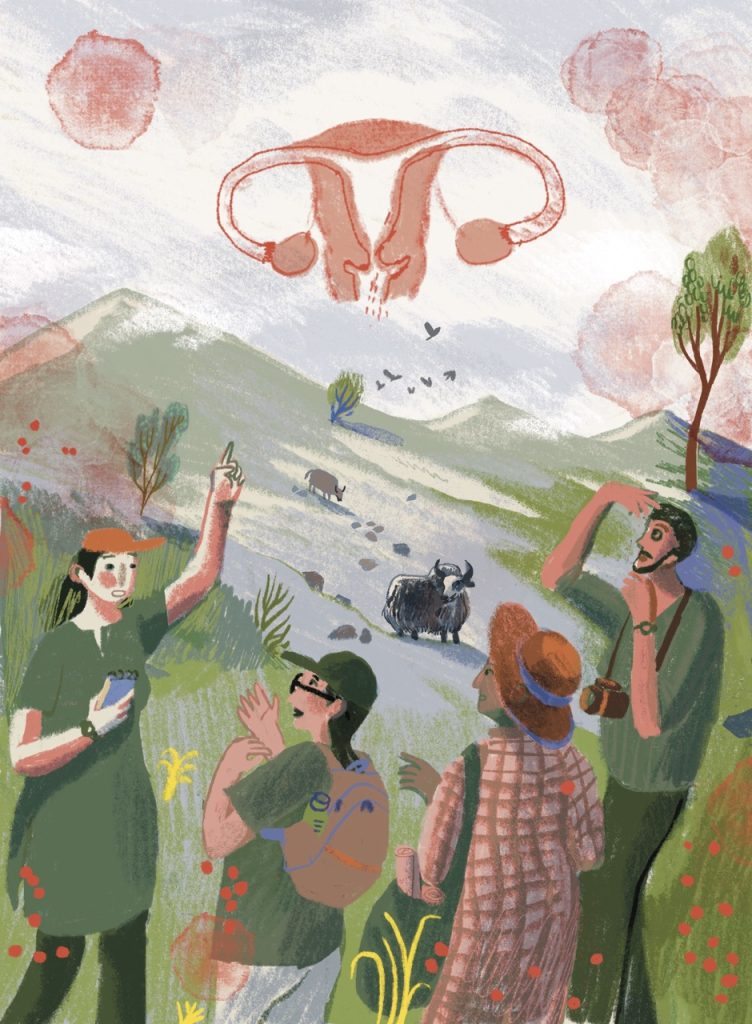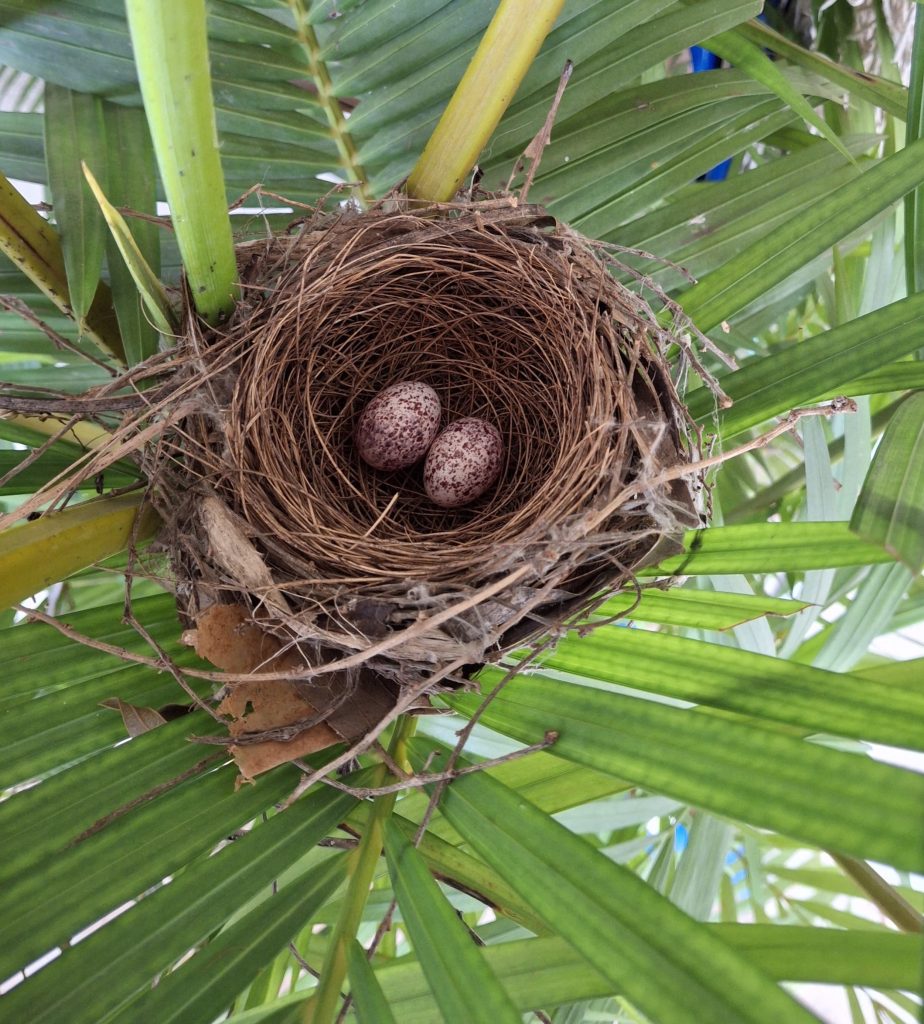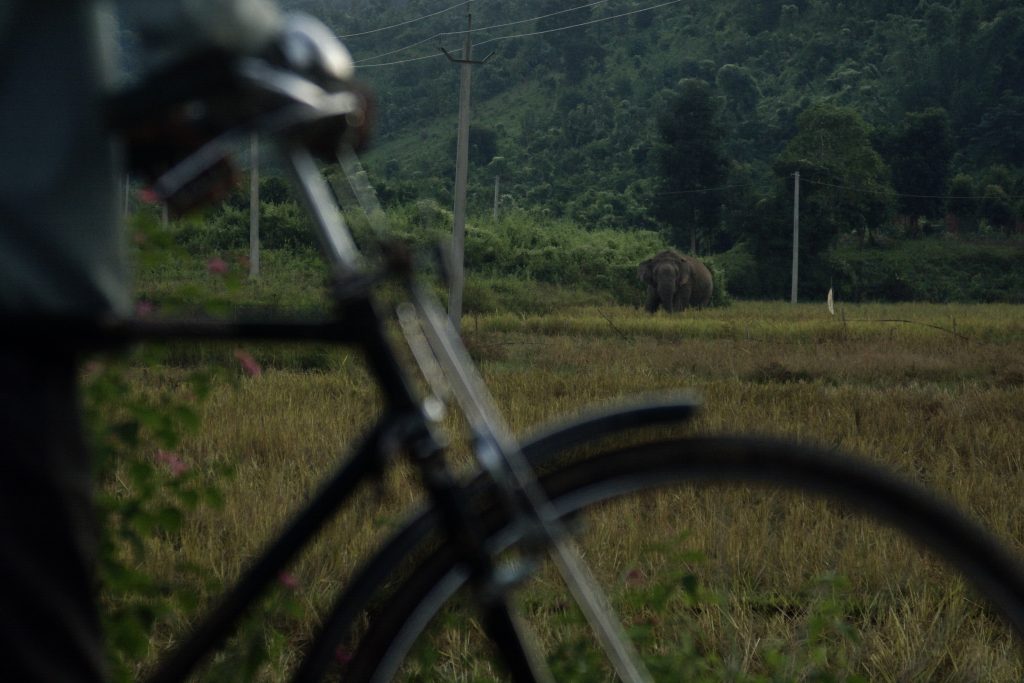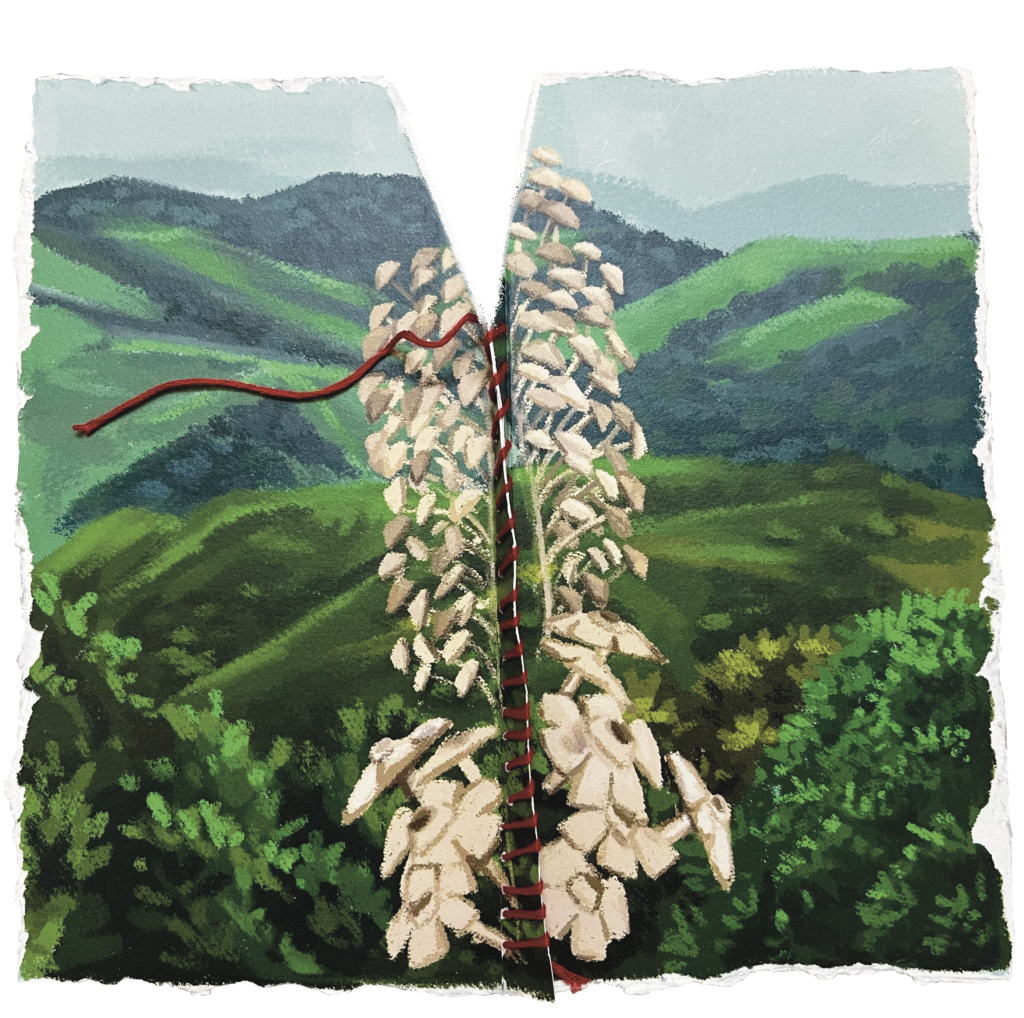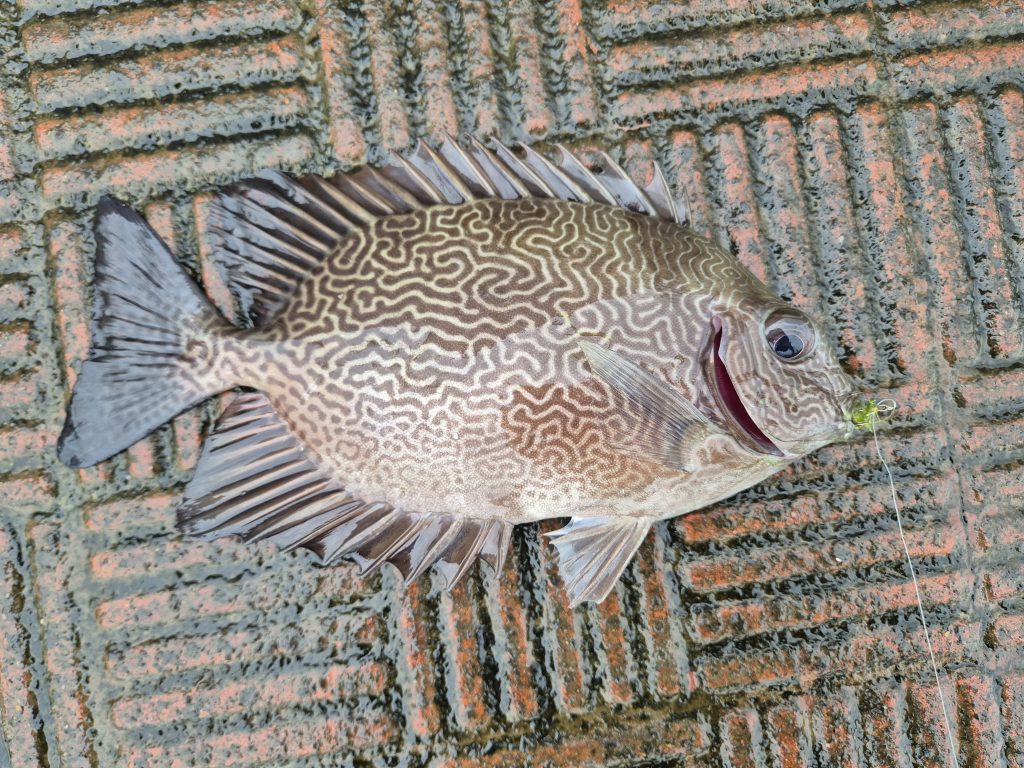The central desert of Baja California in northwestern Mexico is as beautiful as it is unforgiving. The dreamlike landscape is dominated by centuries-old cardon cacti (Pachycereus pringlei) and otherworldly boojum trees (Fouquieria columnaris), their common name in English aptly borrowed from Lewis Carroll’s “Hunting of the Snark”. Temperatures rise above 50°C in the scorching summers, and often plunge below 0° in winter, with a scarce 100–300mm annual rainfall. Nestled between the cold waters of the Pacific Ocean and the subtropical Gulf of California, the seas are rich and abundant: home to five species of sea turtles; diverse marine mammals, including grey whales (Eschrichtius robustus) that calve in the Pacific lagoons; and countless fishes and invertebrates.
Humans have inhabited this extreme landscape for at least 12,000 years. Cochimi people were nomadic foragers, fishers, and hunters who moved seasonally, traversing between water sources and resources on land and at sea. After European contact in the 18th century, the Cochimi population dropped 90 percent within two generations as a result of epidemics and famines caused by forced sedentarisation. In the following centuries a multi-ethnic society, sometimes known as Californios, was formed by the descendants of the Cochimi people, Spanish and Mexican settlers, and subsequent waves of immigration from various regions of Mexico, Europe, the United States, China, and Japan. They established small, dispersed communities and ranches throughout the peninsula. To this day, this isolated region has a population density of about two people per square kilometre, among the lowest in the world.
I’ve been fortunate to work in the central desert for the past ten years, learning from people who have not only survived but thrived in this harsh environment thanks largely to their detailed knowledge of the natural world. I’ve worked with master fishers on both coasts to try and reconstruct oceans in the past and how they have changed. Scientists may underestimate the magnitude of past biodiversity or abundance if research is limited to available ecological data—which in this region generally spans less than 30 years—a phenomenon known as “shifting baseline syndrome”. Sea turtles, and green turtles (Chelonia mydas) in particular, have played a fundamental role as food and medicine for the regions’ inhabitants for millennia. The oldest fishers witnessed an ocean vastly different from what we see today, and their knowledge of how green turtle populations and habitats have changed over time is critical for understanding the present and for addressing future challenges.

Don Carlos started working as a sea turtle fisher on the Pacific coast in the early 1940s. He and his father would spend weeks at a time on an uninhabited island in Ojo de Liebre Lagoon, harpooning green turtles from a small canoe. The lagoon is known for deep canals and broad shallows, and turtle fishing required not only skill in navigation, but precise conditions of winds, currents, and tides. The smallest ripples in the surface water impeded visibility, so fishing was only possible during neap tides, with calm winds and still waters. Any turtles caught were filleted and salted, and their fat was boiled down into oil. Without any source of freshwater, they rigged a distiller from oil cans and copper pipes to distil seawater. Voyages would last until there was enough salted meat to make an overland journey to the nearest village, El Arco, worthwhile.
They would travel a day and a half by donkey or mule, packed with some 20 kilos of sea turtle jerky that could last for months without spoiling, and would be eaten in isolated ranches or mining towns. At El Arco, the meat was sold or traded for rations such as beans, rice, coffee, or wheat flour. In those days, several factors restricted sea turtle catches: demand was limited to a few towns or ranches, populated by a handful of people; fishing itself required detailed knowledge of the lagoon, extraordinary skill, and no small measure of danger; and Don Carlos and his father were the only fishers working in an area of at least 50 square nautical miles.
Don Ignacio arrived in the Midriff Islands of the Gulf of California in 1950. His family journeyed overland for two weeks by donkey, from one oasis or spring to the next, searching for promising fishing grounds. In his early days as a fisher, crews of two or three people would row for hours, or even days, to remote fishing camps, where they stayed until they either filled their canoes with turtles or ran out of food or water. The navigator’s skill was vitally important: the knowledge to read treacherous currents and shifts in the winds, to predict oncoming storms, and to guide the crew to safe (though uninhabited) harbours along the desert coast could mean the difference between life and death. Trips were short when fishing was good, and dangerously long when catches were scarce or when wind or storms kept them ashore. Detailed knowledge of the desert coast helped them stretch out supplies of water, sometimes supplemented from small springs or seasonal pools, and hunting skills could help stretch out food supplies. Fishers would make flour tortillas with sea turtle fat and sea water, and game such as mule deer (Odocoileus hemionus) and bighorn sheep (Ovis canadensis) provided meat that could be eaten at camp or salted.
Fishers primarily caught green turtles with a highly selective method: harpooning. This art, based on the careful observation of sea turtles’ behaviour and biology, required tremendous skill as the turtles were bought and transported live. Crews worked at night, with an oil lamp over the bow to illuminate the surface. The harpooner would signal the direction to the helmsman and throw the harpoon with just enough force to pierce the shell without breaking it or striking the lungs. Short, lightweight harpoons were used in summer months, when turtles are mobile and spend time near the surface. Long harpoons with weighted tips were used in winter months, when the turtles would lay dormant on the seafloor.
Green turtles were sent to market 800 kilometres away, near the U.S. border. The journey across the desert could take from two days to two weeks, depending on conditions. In the community, sea turtles were a staple food: a single turtle could easily feed 20 people, and its meat could be salted and preserved to last for weeks. Nothing was wasted: rendered fat was used for cooking and as medicine, and every part of the animal—including the shell, which could be boiled down to a gelatinous consistency—was used. The small human populations, difficulty of capture and transport, and limited market demand kept captures at a certain level. However, things would soon change. From the 1960s onward, the growth in cities along the U.S.-Mexico border increased market demand for sea turtle meat. With the introduction of specialised set-nets, turtles could be captured easily and in far greater numbers. Offboard motors, with ever-increasing horsepower, allowed crews to move farther and faster, and reduced the risks of getting caught in winds or strong currents. The paved trans-peninsular highway, built in the early 1970s, reduced the journey to market centres from days to hours. This “perfect storm”of market demand, market access, and improved fishing technology led to massive captures that drove the population to near-extinction within two decades.

By working with fishers to estimate past green turtle populations and integrating them with ecological monitoring data, my colleagues and I have reconstructed over 70 years of green turtle population trends in the region. There is certainly good news: populations are growing after more than 40 years of conservation efforts (critical nesting beaches in southern Mexico have been protected since 1980, and all sea turtle captures in Mexico have been banned since 1990). However, populations have not reached historical baseline levels, and sea turtles face growing threats from climate change, which will be far more difficult to mitigate than direct human impacts. As fishing communities and sea turtles face the challenges of a fast-changing planet, the knowledge gained over generations will be critical for charting courses into the future.
Acknowledgements
The author acknowledges and thanks all the fishers, and their families, who opened their homes and shared their experiences. Research was funded by Consejo Nacional de Ciencia y Tecnologia (CONACyT) academic grant no. 289695. The author also thanks Nemer Narchi for his valuable feedback and comments.
Further reading
Early-Capistrán, M. -M., E. Solana-Arellano, F. A. Abreu-Grobois, N. E. Narchi, G. Garibay-Melo, J. A. Seminoff, V. Koch et al. 2020. Quantifying local ecological knowledge to model historical abundance of long-lived, heavily-exploited fauna. PeerJ 8: e9494. https://doi.org/10.7717/peerj.9494
Click here to read the article in Spanish.

